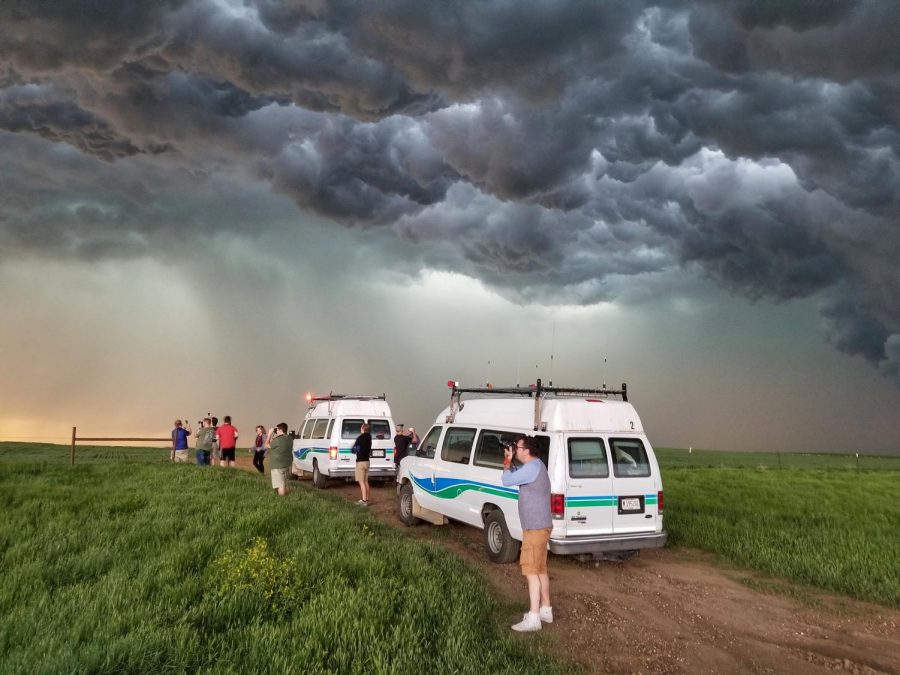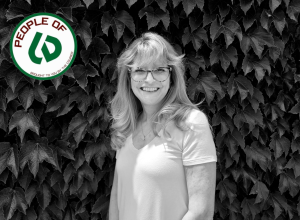COD’s Meteorology Department explores the fascinations of weather
Photo by Evan Anderson: College of DuPage’s storm chasing program pursuing super-cell formations, near Eagle Butte, South Dakota
September 6, 2018
To stand before the darkening clouds, the low rumble of nature’s ferocity, is to feel the immensity of existence raining down upon you. Few moments can ignite wonder, like the strike of lightning reflecting in the gaze of an awe-struck eye.
Life is comprised of a series of time-lapsed photos. Every moment, every second bleeding into the next. If we take a moment, and raise our heads to the sky, we capture the frame, beneath the magnificence of it all.
Weather is the living, fluid frame of time.
College of DuPage Professor of Meteorology Paul Sirvatka’s life has shown, “You never have weather exactly like the weather you are currently experiencing.”

“Weather is chaotic, and always different. It’s a fluidity complex beyond belief.” For over 25 years, Sirvatka has developed the college’s meteorology department into a standard-bearer for providing education and opportunities for students.
“By coming here for your first two years, you will receive more education than any place in the country. We hit the ground running, and offer to our students what other schools only offer their third and fourth-year students. Our program is more extensive; we like to have more advanced classes upfront to immerse the students in the field,” explained Sirvatka.
Sirvatka explained how their curriculum has resulted in a great reputation with other schools. Prestige is also brought by the department’s NEXLAB weather website. NEXLAB is used by almost every university’s meteorology program in the nation.
“NEXLAB compounds the generation of images, primarily for models, satellite and radar. We will walk into National Weather Service offices, and they will have displays on the wall using our website,” said Sirvatka.
The accumulation of data is so comprehensive, even the Navy relies on NEXLAB’s information.
“Around 25 years ago, we found our niche of coming up with data. Now nobody else does what we do, because we already have the web presence and they can’t provide anything more,” said Sirvatka.
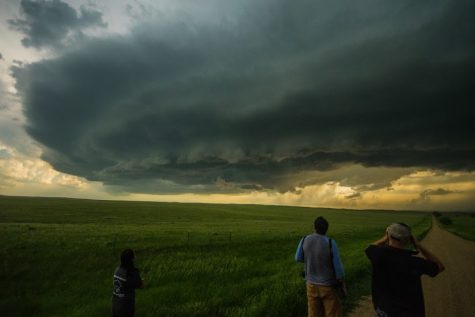
Mike Zuranski, Support Analysis and Product Developer, explained the weather reading instruments on campus, “Our WeatherBug station is on the roof of the BIC building. The station has a series of temperature sensors and a rain gage. A group of sensors send readings to an electrical closet below it with a base unit.”
The station records temperature and humidity, from which they can derive dew-point. It also records barometric pressure, precipitation and the wind’s speed and direction.
Evan Anderson, Web Developer and Lab Manager, explained, “The data it outputs is privately viewable by the campus. Our staff deciphers the data and presents it to the larger public on our website.
Sirvatka said the program launches helium weather balloons in October and April. The balloons rise to the mid-stratosphere and provide information for students to examine. They also utilize balloons for the storm chasing program.
“We attach a small box of instruments with a radio transmitter set up to a receiver. If we capture something significant, we share our information with the National Weather Service so they can use our data,” said Sirvatka.
Anderson elaborated, “Our instruments help us record data such as the wet bulb temperature, which is the temperature of a raindrop through unsaturated air. Our students also get to understand how atmosphere conditions change and how it relates to the ideal gas law.
“My personal favorite equation is the hydrostatic balance equation. It explains the force of gravity and the vertical pressure gradient force. There’s a force on the air rising, and there is gravity acting down. When you have a storm creation, everything is rising,” he finished.
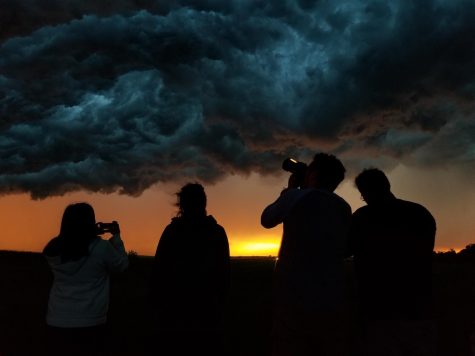
Students are encouraged to take their learning and explore their curiosities. The school’s storm chaser program allows the students to immerse themselves in the fury and astonishment of some of nature’s most spectacular storms.
The program started in 1989, and is the nation’s oldest collegiate storm chasing program. Last year, the program ventured from Texas, up through Oklahoma, all the way to the Dakotas, just south of the Canadian border.
Sirvatka said, “People come internationally to participate in our program. Last year, we had people from Connecticut, California, Finland, Australia and Great Britain.
“We are always looking for tornadoes, but we also see some incredible thunderstorms. They can be very exciting and dangerous, producing large hail and damaging winds.”
Anderson detailed, “We search for a particular type of storm called a super-cell, which is a rotating thunderstorm. We target the conditions favorable for super-cells because they are known to be the most prolific in generating tornados.
“Cumulonimbus clouds for super-cells have a beauty that can be jaw-dropping. There are times where you are just out of breath staring at them.
“There’s a photo in the Dakotas, where I’m looking at the storm, backlit by the sun. As the sunlight shone at a specific angle, the light refracted off the surface of a lake and displayed onto the bottom of a cloud. It blazed in a vibrant orange,” said Anderson.
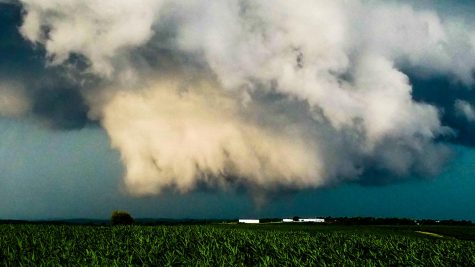
Sirvatka explained, “We have many people whose primary passion is photography. They come to capture the beauty of picturesque storms, and we teach them the science along the way.”
Everyone becomes fascinated by weather in a unique, personal way. Our memories become intertwined with weather. Sirvatka remembers the astonishment and infinite curiosity of watching storms in the garage with his father. He can also remember a major Chicago snowstorm in April 1972 shutting down the entire city.
Zuranski reminisced, “Once on campus, one Friday afternoon, we had clear skies, but 50 mph post-frontal, sustained winds. Part of the roof attached to the overhang was ripped off behind our classroom. We captured it on our time-lapse camera. There was debris all along the walkway and into the trees.”
Anderson quipped, “It’s a good thing nobody was in the walkway adjacent to the roof, because the debris was flying with intense force.”
Zuranski also recalled the deadly 1990 Plainfield tornado in which 29 people died and 353 were injured, “I remember looking westward out the window, and the sky was incredibly dark and an ominous green.”
Sirvatka stated, “I’ve experienced it a few times, the sick, nauseous pea-soup you experience before a tornado. We can’t measure ‘greenness,’ so it’s hard to know what causes the color.”
New staff member Ron Stenz mused, “It’s probably the light refracting through hail, providing the green.”
Anderson stated, “It’s all about your perspective relative to the sun getting you the intense depth of greenness.”
Tornadoes can be devastating, however, the more mundane weather carries just as much significance across our lives.

Zuranski stated, “When people hear the terms ‘severe weather,’ they think tornados and hurricanes. Severe weather can also be heat waves or droughts, which carry devastating consequences for agriculture.”
Sirvatka explained the role weather and climatology science plays for society.
“We are finding out how expensive weather can be. Businesses are starting to hire meteorologists to save money. If a company loses money, shipping when it’s too hot or too cold, or by inefficient snow routes, meteorologists can plot their trucks and save millions of dollars. Weather impacts not only our daily lives but has global economic implications. Planning ahead for the future in long-range forecasting has become a highly valuable asset in the business world.
“Some of the best-paid meteorologists are working with energy companies, insurance, or agricultural and futures markets. What meteorologists say, changes the markets. People profit or lose massive amounts of money based on forecasts.”
Stenz stated, “There has been a larger growth for meteorologists in the private sector for economically motivated companies. If you can program, visualize data, and are an expert in meteorology, you are a more valuable professional commodity.”
Musing on the severity of weather in the future, Sirvatka stated, “People need to learn how to better prepare for severe weather and mitigate those costs. Meteorologists need to play a greater role in reaching the public to help them better understand what these dangers are.”
Meeting societal demands, in an increasingly important time for meteorologists and climatologists, could prove more difficult with the Trump administration’s 2019 budgetary proposal. The proposal cuts 20% of funding to the National Oceanic and Atmospheric Administration ($1.1. billion), including a 6% cut for the National Weather Service.
Sirvatka explained, “The weather service is already bare-bones, so any cut is really tough. Our scientists will find a way to work with this. I do like that Trump chose (Atmospheric Meteorologist) Kelvin Droegemeier, from the University of Oklahoma as his science advisor. Hopefully, he will advocate meteorology strongly, potentially having a great impact.”
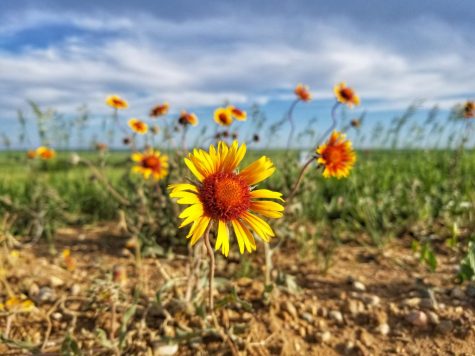
Greater awareness and fascination can help demonstrate how vital meteorology and climate science is to our society.
Anderson stated, “Take the time to appreciate the wonder of this science. People go about their daily lives looking down at the ground, but if you look up, you will see things like halos or sun-dogs, which are light refraction from the sun hitting cloud particles and bouncing back to your eye.
“Even though the atmosphere is made of air, it is a fluid. Picture it as you are standing at the bottom of an ocean. The water of weather is crashing and moving all around you.
“If you can marvel at it, you can begin to ask yourself, “What causes that?” There’s a whole realm of science and light refraction in the atmosphere waiting to be appreciated.”

